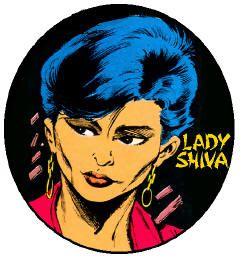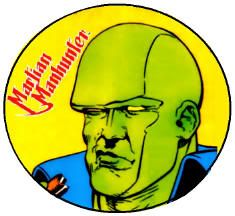Dishonorable Mentions
Doom Patrol #3 (October, 2004)

Despite his professed love for the team, John Byrne projected lighthearted Silver Age sweetness and Bronze Age hokey melodrama at a team that seemed to be bitter, queer and creepy from its earliest days. This cover represents a complete rejection of anything Vertigo-tinged and the embrace of the appearance of the most blandly off-brand of super-teams. This looks like one of those covers Byrne did for small press operations during the black and white boom, cannily incorporating a lack of interior color into the crumby costume design. I especially dislike Nudge's "edgy" fishnet stockings, Negative Man's gnarly skeleton form and the big dumb grin on Rita's face. At least characters like Grunt and Vortex were comparably awful to prior team additions. Byrne did offer a couple of fun cover spins over his run though, #8 and #13.
Doom Patrol #8 (May, 1988)

What kind of person looks at a team or art of this caliber and says, "mmm, gimme some of that?" Friggin' hideous, and Erik Larsen drew several more like it.
Honorary Mentions
Secret Origins Annual #1 (1987)

I feel bad for slagging on Byrne earlier, as he's a fine artist who in his prime offered several lovely team covers, like 1986's Official Doom Patrol Index #1 and #2. Have you ever seen such well kept graveyards or specters so clearly prepared for hand holding and a few rounds of "Kumbaya?" This is of course exactly the problem, since a "Doom Patrol" should never seem so well adjusted and clean cut.
My Greatest Adventure #80 (June, 1963)

Not their greatest cover, but certainly their first!
Doom Patrol #1 (December, 2001)

Reflecting the new team in Robotman's dome and his dire assessment of the group from jump was novel. The final cover of this volume did a Maguire riff, duplicating the basic image with Robotman confirming the title's predicted doom. The run also did a nice job of recalling the Vertigo years on #3, plus a soft jab at revisionism with #13.
- Doom Patrol #90 (1964)
- Doom Patrol #94 (1965)
- Doom Patrol #100 (1965)
- Doom Patrol #108 (1966)
- Doom Patrol #112 (1967)
- Doom Patrol #119 (1968)
- Doom Patrol #19 (1989)
- Doom Patrol #67 (1993)
10) The New Teen Titans #13 (November, 1981)

George Perez is one of the most gorgeous, shiniest artists in comic book history. Therefore, he is one of the worst possible fits for the Doom Patrol. Check his slick cover for 1982's DC Special Blue Ribbon Digest #19 and tell me that isn't Anyteam, U.S.A. Perez is swell at soap opera, but the DP are a troubled lot with a disconcerting quality that Perez is too pleasant to convey. However, this was a key issue in returning the DP to readers' minds, and Robotman's dangling body warding off snoopy kids is a previously unseen variation on the DP grim tableau.
9) Doom Patrol #89 (August, 1964)

The debut of the Animal-Vegetable-Mineral Man, the kind of bizarre menace that defined the DP and set the standard for the demented threats to come.
8) Doom Patrol #5 (February, 1988)

Steve Lightle is a favorite cover artist of mine, and the first five issues of this series featured rare interior art by the man. However, the book was clearly intended to treat the team like an X-Men knock-off when DC was already knee deep in the same. Lightle was a perfect choice for the book at a time when he was forced to draw hideously gaudy New Mutants rejects, and even his wraparound cover for the debut issue made a silk purse out of a generic battle scene. I feel the graveyard is where the DP's heart really lies.
7) Doom Patrol #86 (March, 1964)

The first issued comic book bearing the Doom Patrol title, and the first appearance of Monsieur Mallah and the Brain. Does any cover better represent '50s B-movie mad science than a French guerrilla gorilla and a brain in a jar? Only if you threw in a gigantic insect of some kind, and maybe a flesh-eating animated inanimate object. Simon Bisley did a cool ape, as well.
6) Doom Patrol #120 (August, 1968)

This one loses points for being a tad forced and sappy, but your teammates/family turning their backs on you after you've literally fallen to pieces is messed up. That one enlarged eye and Cliff's anguished cries earn points back.
5) My Greatest Adventure #82 (September, 1963)

There are lots of covers with Robotman in some state of disrepair, but the implied ultimate sacrifice and the degree to which he's melted put this image over the top. That one crimson eye staring at the reader and a skull so deeply caved in that Cliff's brain must be boiling in its pan are deliciously gut-wrenching.
4) Doom Patrol #13 (October, 2010)

Matthew Clark produced a couple dozen attractive covers for volume 1, 2, 3, 4 5(?), but this was the only one to sneak into the top ten. #1 and #7 are relatively conventional but still slightly askew team shots, but #18 is Byrnesque in its commercialization. On the other hand, this fractured image of Rita Farr's face foreshadows the revelations within, and prove that she's psychologically and physiologically damaged enough to reside with the freaks out of more than just pity, but instead true kinship.
3) Challengers of the Unknown #48 (March, 1966)

There are whole host of covers in which the DP interacts with other super-heroes/teams, such as the wedding of Rita and Steve Dayton in #104 or battling the JLA at various points. That's typical group activity in comics. Becoming a "grim burial squad" for the Challengers, complete with a setting son and a robot seemingly on the verge of (non-emo Red Tornado) tears, is so DP. Also, the Challengers are about the only DC team with a comparable mortality/casualty rate, making it extra apropos.
2) Showcase #94 (September, 1977)

This works on multiple levels. It's a new Doom Patrol debuting in a different anthology title. The original DP was as much a product of the '60s visually as these guys were in the '70s. There's Robotman carrying his own rusted husk to the mass grave of the original team. While on the surface more conventional, the new DP was doomed to even greater failure and far more permanent deaths than the first team. Finally, this cover set the standard for DP launches opening on a dour, pessimistic note. There is no trumpeting the arrival of a glorious new incarnation, but instead a second wave stepping over the corpses of the first with similarly dim odds of survival.
1) Doom Patrol #121 (October, 1968)

This is how you end a series. Whenever someone points to Jean Grey as the first major death in comics, they need to be reminded that an entire super-team was snuffed out twelve years earlier, with Rita Farr staying dead about seven times longer than Phoenix, and the readers themselves were to blame.
Their Top Covers of the 1980s
- The Atom @ Power of the Atom
- Wonder Woman @ Diana Prince is the New Wonder Woman
- Aquaman @ Justice League Detroit
- Martian Manhunter @ The Idol-Head of Diabolu
- DC75: Top Character Covers of the Dodranscentennial

















2 comments:
Great list. I was a little surprised to find none of Morrison's run here but it is hard not to include so many of the more classic covers which are exemplary.
The Byrne Secret Origins book is a nice primer on the team, leading into the Kupperberg reboot which eventually led to Morrison. It also includes a panel where the Supergirl/DP/Reactron crossover is retconned into a Power Girl/DP/Reactron one. Alas, Supergirl was dead defunct at the time!
I left off Vertigo covers because they're their own separate beast. The idea with these countdowns is to be hero subjective, meaning strong literal representations of character(s.) This is as opposed to a more objective, scholarly take that would more greatly consider technical aspects. Few super-hero covers could compare to the Vertigo paintings, but they tended to be very story specific or abstract to the exclusion of classical protagonists. In other words, Simon Bisley didn't do many group shots, and Richard Case's weren't as cool as Bruno Premiani's.
Post a Comment